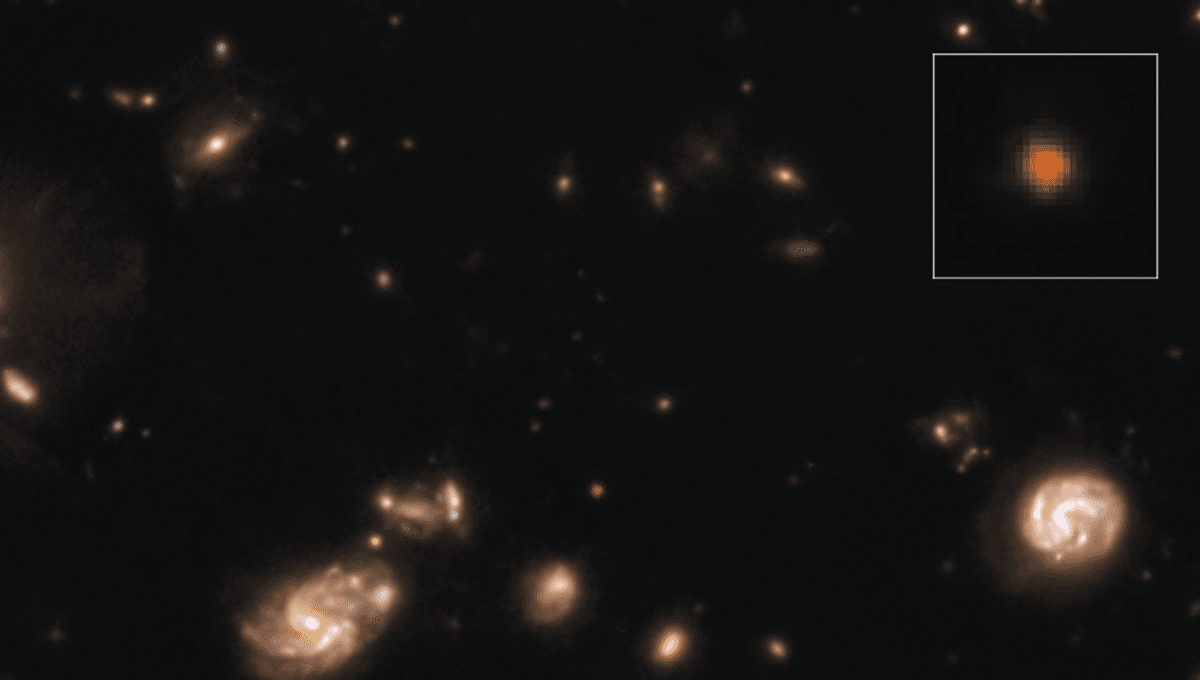A recent detection from JWST is being widely discussed. The discoverers suggest that it might be an incredible record-breaker: it could be the oldest galaxy we have ever seen. This is yet to be confirmed, and other hypotheses are also very intriguing. The object could be an extremely dusty galaxy, or a cool object in the Milky Way, such as a brown dwarf or a free-floating planet.
The rest of this article is behind a paywall. Please sign in or subscribe to access the full content. The object was discovered by JWST as part of the Cosmic Evolution Early Release Science (CEERS) Survey and has the official name of CEERS ID U-100588. In a paper yet to be peer-reviewed, it has been nicknamed "Capotauro", from a mountain at the border between the Italian regions of Tuscany and Emilia-Romagna. If Capotauro is really the most distant known galaxy, it might dramatically change our understanding of galaxy evolution. The general idea of the formative years of the universe suggests that it took several hundred million years for the protogalaxies to assemble after the Big Bang. The most distant known galaxy so far is known as MoM-z14; the MoM is an acronym standing for Mirage or Miracle, whose light has travelled from 280 million years after the Big Bang. If the initial estimates are confirmed, Capotauro’s light comes from just 90 million years after the beginning of the universe. Astronomers love comparing the 13.8 billion years that the universe has existed to a single Earth year. This is known as the Cosmic Calendar. It helps us quantify things in a hands-on way. So if the Big Bang was at midnight of January 1, our galaxy formed on March 1, the Earth on September 14, and Homo sapiens appeared on December 31 at 11:52 pm. What about these extreme galaxies? In the Cosmic Calendar analogy, each day is about 40 million years long. The expectation is that some of the oldest galaxies formed after the first week of January (MoM-z14 is on January 8), while Capotauro appears to have formed in the early hours of January 3. It’s obvious why that would be exciting, but while the initial data is intriguing, without confirmation that the galaxy is really that far away it is important to consider other options. If the object is such a distant galaxy it has to be incredibly bright, and in its short lifespan, must have converted gas into stars with an efficiency not seen since in the whole universe. An equally bold new explanation for such objects is that they are black hole stars, where black holes are wrapped in a cocoon of swirling hydrogen that would make the object look like a compact distant object. The study has been submitted to Astronomy & Astrophysics and is available on the arXiv.






